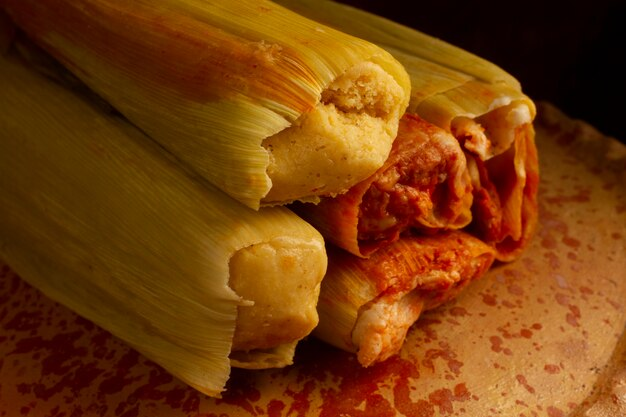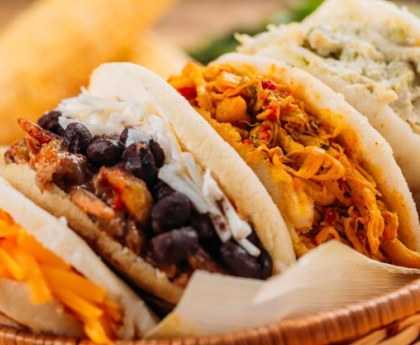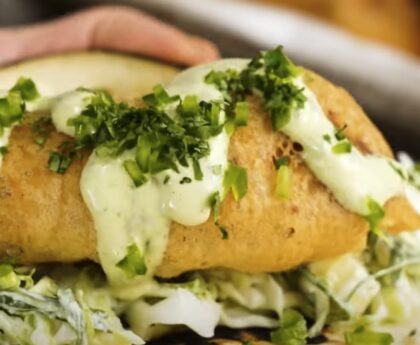Mexican cuisine is a vibrant and flavorful adventure, combining a rich history with an array of spices and ingredients. When visiting a Mexican restaurant, the menu can often feel overwhelming, brimming with choices that range from spicy to savory, hearty to light. This article is your guide to navigating through the menu and selecting the best dishes to order at a Mexican restaurant.
1. Tacos: A Classic Choice
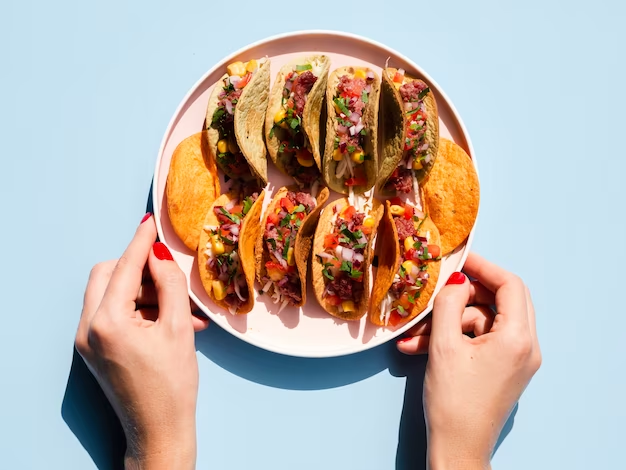
Tacos are a cornerstone of Mexican cuisine, boasting a rich history that dates back centuries. The word “taco” itself originates from the Spanish word “taco,” which means “plug” or “wad.” This term was originally used to describe a small piece of paper wrapped around gunpowder and inserted into mining holes to create an explosion. Eventually, it evolved to describe the folded or rolled tortillas filled with various ingredients that we know and love today.
Tacos have evolved over time, and there are now countless variations available, catering to a wide range of preferences. However, the fundamental elements of a taco remain consistent: a tortilla, a filling, and toppings.
Varieties of Taco Fillings
Taco fillings are where the creativity and diversity truly shine. Whether you prefer meat, seafood, or plant-based options, there is a taco filling to suit every palate. Here is a breakdown of some popular taco fillings:
- Beef: Ground beef seasoned with a blend of spices, commonly referred to as “picadillo,” is a classic choice. You can also opt for tender, thinly sliced steak or flavorful shredded beef.
- Chicken: Grilled, seasoned chicken strips or shredded chicken cooked in a rich tomato-based sauce are common choices for chicken tacos.
- Fish: Fish tacos typically feature battered and fried fish, such as cod or tilapia. The crispiness of the fish complements the soft tortilla perfectly.
- Vegetarian: Vegetarian tacos offer a world of possibilities. Grilled vegetables, beans, mushrooms, and tofu can be used as the main filling, often seasoned with various herbs and spices to enhance flavor.
- Seafood: Seafood lovers can enjoy tacos with shrimp, scallops, or even octopus as the star filling. These tacos often have a coastal influence and are known for their freshness.
Key Ingredients for Tacos
To create the perfect taco, you need to pay attention to the key ingredients that form its foundation. These ingredients are essential to achieving the authentic taste and texture of a taco:
- Tortilla: The choice between corn and flour tortillas is crucial and often reflects regional preferences. Corn tortillas have a distinct earthy flavor and are more commonly used in Mexico. Flour tortillas, on the other hand, are softer and milder in taste, making them a popular choice in many other countries.
- Filling: As discussed earlier, the filling is the heart of a taco. Whether you’re using meat or vegetables, it’s essential to season and cook them to perfection to infuse flavor into every bite.
- Toppings: Toppings add layers of flavor and freshness to your taco. Here are some essential toppings:
| Ingredient | Description |
| Salsa | Salsa can range from mild to spicy and comes in various flavors like tomato-based salsa roja or tangy salsa verde. It adds a zesty kick to your taco. |
| Cilantro | Fresh cilantro leaves provide a burst of herbal freshness that complements the other flavors in your taco. |
| Lime | A squeeze of fresh lime juice not only enhances the overall taste but also helps balance the richness of the filling. |
2. Enchiladas: Rolled and Rich

Enchiladas are renowned for their unique preparation method. Unlike tacos, which are typically folded, enchiladas are rolled tortillas filled with a delightful combination of meat, cheese, or beans. The rolled structure allows for a harmonious fusion of flavors, as every bite encompasses a balance of ingredients.
Varieties of Enchilada Fillings
The filling of an enchilada is where customization and creativity take center stage. There are several options to choose from, each offering a distinct taste and texture. Here’s a breakdown of popular enchilada fillings:
- Meat: Enchiladas often feature succulent meats such as shredded chicken, beef, or pork. These meats are typically seasoned and cooked to perfection before being generously layered inside the tortillas.
- Cheese: Cheese enchiladas are a vegetarian-friendly option, where tortillas are filled with a mixture of melted cheese, onions, and sometimes green chilies. The result is a gooey, cheesy delight.
- Beans: For those seeking a hearty and plant-based option, bean enchiladas are an excellent choice. Refried beans or black beans, seasoned and mashed, serve as the filling. They can be combined with cheese or served on their own.
The Heart of Enchiladas: Chili Sauce
Chili sauce is the crowning glory of enchiladas. It is this flavorful sauce that bathes the rolled tortillas, infusing them with a rich and zesty character. The choice of chili sauce can significantly influence the overall taste of your enchiladas. Below are some common types of chili sauces used:
- Red Chili Sauce (Salsa Roja): This sauce is made from dried red chili peppers, tomatoes, onions, garlic, and various spices. It offers a mild to moderately spicy flavor profile with a hint of sweetness from the tomatoes.
- Green Chili Sauce (Salsa Verde): Salsa verde is prepared using green chili peppers, tomatillos, onions, garlic, and cilantro. It imparts a tangy and slightly spicy taste, adding a refreshing contrast to the richness of the filling.
- Mole Sauce: Mole is a complex and flavorful sauce that combines chili peppers with a blend of ingredients like chocolate, spices, and nuts. It results in a rich, velvety, and slightly sweet sauce that pairs exceptionally well with chicken enchiladas.
Creating Enchiladas: A Step-by-Step Guide
To craft mouthwatering enchiladas, follow these steps:
- Prepare the Filling: Cook and season your chosen filling (meat, cheese, or beans) to perfection. Ensure it is well-flavored and tender.
- Warm the Tortillas: Gently warm the tortillas to make them pliable. This can be done in a microwave, on a skillet, or in the oven.
- Fill and Roll: Lay out a tortilla, add a portion of the filling down the center, and roll it tightly. Place the seam side down in a baking dish.
- Sauce and Bake: Generously coat the rolled enchiladas with your preferred chili sauce. Bake them in the oven until they are heated through and the sauce is bubbling.
- Serve and Garnish: Once out of the oven, garnish your enchiladas with toppings like sour cream, chopped cilantro, diced onions, or crumbled queso fresco for added flavor and visual appeal.
3. Guacamole: A Fresh Start
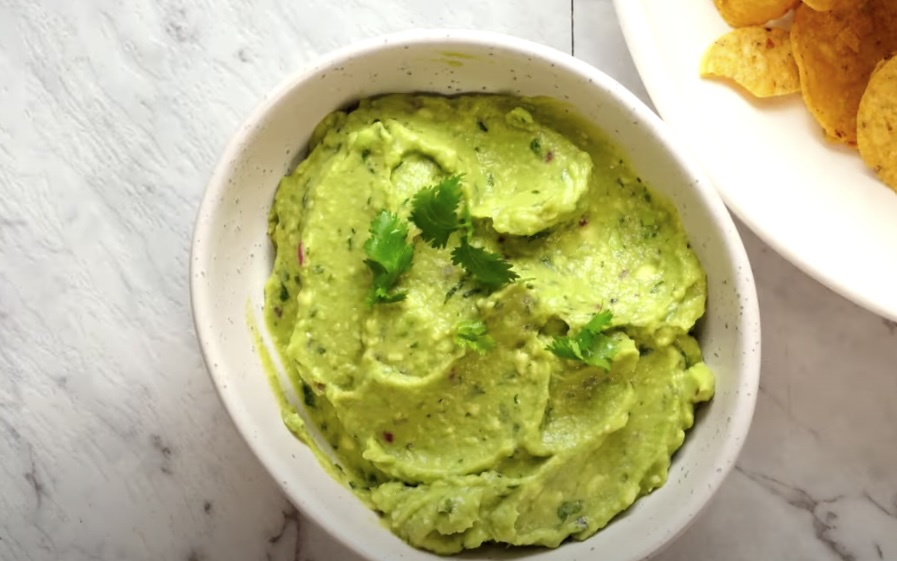
Guacamole is a quintessential Mexican creation that has become a global sensation. It is renowned for its fresh and creamy texture, making it the perfect companion for tortilla chips or as a condiment for various dishes. Guacamole embodies the essence of Mexican cuisine with its use of ripe avocados and a medley of vibrant ingredients.
Key Ingredients for Guacamole
The charm of guacamole lies in its simplicity and the quality of its ingredients. Here are the key components that make up this delectable dip:
- Avocado: The heart and soul of guacamole, ripe avocados are the primary ingredient. They contribute a rich and creamy texture while delivering a subtle, nutty flavor. Select avocados that are slightly soft to the touch but not overripe.
- Onion: Red or white onions are commonly used in guacamole. They add a mild, sweet, and slightly pungent flavor that complements the creaminess of the avocados. Onions should be finely diced to ensure even distribution.
- Tomato: Fresh tomatoes are a crucial element, offering a juicy and slightly tangy contrast to the richness of the avocados. Roma or plum tomatoes are often preferred for their firm texture and fewer seeds.
- Cilantro: Fresh cilantro leaves bring a burst of herbal freshness to guacamole. Their bright and citrusy notes enhance the overall flavor profile. Chop cilantro finely to disperse it evenly.
- Lime: Lime juice provides the essential acidity that balances the richness of the avocados. It also prevents the guacamole from browning too quickly. Squeeze fresh lime juice for the best results.
Creating Guacamole: A Step-by-Step Guide
Now, let’s dive into the process of making guacamole:
- Prepare the Avocado: Cut the ripe avocados in half, remove the pit, and scoop out the flesh into a mixing bowl. Mash the avocado with a fork or potato masher until you achieve your desired level of creaminess. Some prefer a chunkier guacamole, while others prefer it smoother.
- Add the Ingredients: Finely dice the onion, tomato, and cilantro. Add them to the mashed avocado in the mixing bowl.
- Lime Juice: Squeeze fresh lime juice over the mixture. Start with the juice of half a lime and adjust to taste. The lime juice not only adds a tangy flavor but also helps preserve the vibrant green color of the guacamole.
- Seasoning: Season your guacamole with salt to taste. Be cautious not to over-salt; you can always add more if needed.
- Mix and Taste: Gently fold all the ingredients together until well combined. Taste and adjust the seasoning if necessary. Some like to add a pinch of cayenne pepper or a dash of hot sauce for a spicy kick.
- Chill and Serve: Cover the guacamole with plastic wrap, ensuring it touches the surface to minimize browning. Refrigerate for about 30 minutes to allow the flavors to meld. Serve with tortilla chips or as a topping for tacos, burritos, or grilled meats.
4. Chiles Rellenos: Flavorful and Filling
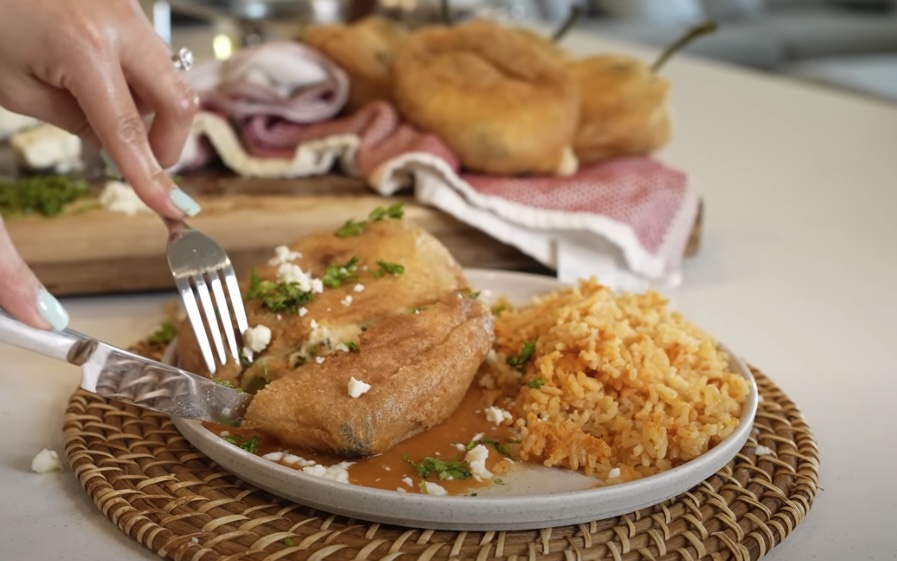
Chiles Rellenos is a dish that boasts a delightful contrast of textures and flavors. The name “Chiles Rellenos” translates to “stuffed peppers,” which perfectly encapsulates the essence of this iconic Mexican dish. It’s a culinary masterpiece that combines the mild heat of poblano peppers with the richness of cheese or meat, all enveloped in a light and airy egg batter.
Key Ingredients for Chiles Rellenos
To craft Chiles Rellenos that leave a lasting impression, you’ll need the following key ingredients:
- Poblano Peppers: Poblano peppers are the stars of this dish. They are prized for their mild to moderate spiciness and deep green color. Roasting or grilling the poblanos is a crucial step, as it not only softens the flesh but also imparts a smoky flavor.
- Cheese or Meat Filling: The choice of filling is where customization comes into play. Common fillings include a variety of cheeses like queso fresco or Oaxaca cheese, as well as meat options such as picadillo (seasoned ground meat) or shredded beef or chicken. The filling should be flavorful and complement the mild poblano peppers.
- Egg Batter: The egg batter is a critical component that gives Chiles Rellenos their characteristic light and airy texture. It’s made by separating egg yolks from egg whites, whipping the whites to stiff peaks, and then gently folding in the yolks.
- Tomato Sauce: The tomato sauce serves as the crowning glory of Chiles Rellenos. It is typically made from tomatoes, onions, garlic, and spices, resulting in a savory and slightly tangy sauce that complements the dish perfectly.
Creating Chiles Rellenos: A Step-by-Step Guide
Now, let’s explore the step-by-step process of making Chiles Rellenos:
| Step | Description |
| Roast or Grill Poblano Peppers | Char and blister poblano peppers over an open flame or broiler. Steam them in a sealed plastic bag for 15 minutes to aid skin removal. |
| Peel and De-Seed Peppers | After steaming, peel off charred skin and remove seeds and veins. Exercise caution, as heat concentrates in these areas. |
| Prepare Filling | Stuff poblanos with chosen cheese or meat filling, ensuring a secure seal to prevent filling escape during frying. |
| Prepare Egg Batter | Whip egg whites until stiff peaks form, then gently fold in egg yolks for a fluffy and airy batter. |
| Coat and Fry | Dip each stuffed pepper into the egg batter, ensuring even coating. Fry until golden brown, and filling is heated through. |
| Simmer in Tomato Sauce | Warm tomato sauce separately. Place fried Chiles Rellenos in sauce to simmer briefly, allowing flavors to meld. |
| Serve | Plate with tomato sauce, garnish with cilantro or queso fresco if desired. Often served with rice and refried beans. |
5. Tamales: A Traditional Treat
Tamales hold a special place in Mexican culture and cuisine, with a history that dates back thousands of years to the indigenous peoples of Mesoamerica. These savory or sweet bundles of joy are often associated with celebrations, festivals, and family gatherings. The process of making tamales is a communal affair, where generations come together to carry on the tradition.
Key Ingredients for Tamales
To create authentic tamales, you’ll need the following key ingredients:
- Corn Dough (Masa): The foundation of tamales is the masa, a dough made from hominy corn that has been soaked in an alkaline solution. This process, known as nixtamalization, enhances the dough’s texture and flavor. Masa is seasoned with a mixture of lard or vegetable shortening, salt, and sometimes broth, resulting in a pliable and flavorful base for tamales.
- Fillings: Tamales can be filled with a diverse range of ingredients. Common savory fillings include shredded meats (such as beef, pork, chicken), cheeses (like queso fresco), vegetables (such as peppers and onions), and spicy sauces. Sweet tamales may contain ingredients like cinnamon, sugar, chocolate, fruit (such as pineapple or strawberry), or even nuts.
- Corn Husks (Hojas de Maíz): Corn husks serve as the natural wrappers for tamales. They are soaked in warm water to soften and become pliable. Each tamale is assembled by spreading masa onto the center of a corn husk and adding the desired filling before folding and tying the husk securely.
Creating Tamales: A Step-by-Step Guide
Now, let’s explore the step-by-step process of making tamales:
| Step | Description |
| Prepare Corn Husks | Soak dried corn husks in warm water for 30 minutes to soften, making them pliable and easy to handle. |
| Prepare Masa | Combine masa with softened lard or vegetable shortening, salt, and broth (if using) in a large bowl. Mix until smooth and well-seasoned. |
| Assemble Tamales | Spread a thin layer of masa onto the center of a softened corn husk, leaving space at the edges. Add desired filling in the center. |
| Fold and Tie | Fold sides of the corn husk over masa and filling, creating a rectangular shape. Fold up the bottom and secure with a strip of corn husk or kitchen twine. |
| Steam Tamales | Arrange assembled tamales upright in a steamer, ensuring a tight pack to prevent unraveling. Steam for 1 to 1.5 hours until masa is fully cooked and tamales have a firm texture. |
| Serve and Enjoy | After steaming, let tamales cool briefly before serving. Garnish with additional sauce, salsa, or toppings according to your preference. |
Conclusion
Mexican cuisine is diverse, vibrant, and absolutely delicious. From tacos to flan, the best dishes to order at a Mexican restaurant offer a taste for every palate. Next time you’re dining out, use this guide to choose dishes that will provide an authentic and memorable Mexican culinary experience. Whether you’re a fan of spicy, savory, or sweet, there’s something in Mexican cuisine for you. So, dive into these dishes and enjoy the rich flavors and traditions of Mexico on your plate!
FAQ
Q: What are the best dishes to order at a Mexican restaurant for vegetarians?
A: Vegetarians can enjoy dishes like vegetable tacos, cheese enchiladas, guacamole, and chiles rellenos. Many Mexican restaurants offer a variety of vegetarian options.
Q: Are there gluten-free options among the best dishes to order at a Mexican restaurant?
A: Yes! Dishes like corn tortilla-based tacos, tamales, and certain kinds of chiles rellenos are often gluten-free.
Q: What is the best dish to order for someone new to Mexican cuisine?
A: Tacos are a great starting point. They are familiar, customizable, and give a taste of the essential flavors of Mexican cuisine.
Q: Can I find healthy options among the best dishes to order at a Mexican restaurant?
A: Absolutely. Dishes like grilled fish tacos, chicken pozole, and salads with fresh ingredients offer healthier options.
Q: How spicy are the best dishes to order at a Mexican restaurant?
A: The spice level varies. Many dishes can be adjusted to your preference, so don’t hesitate to ask for less spicy options.
